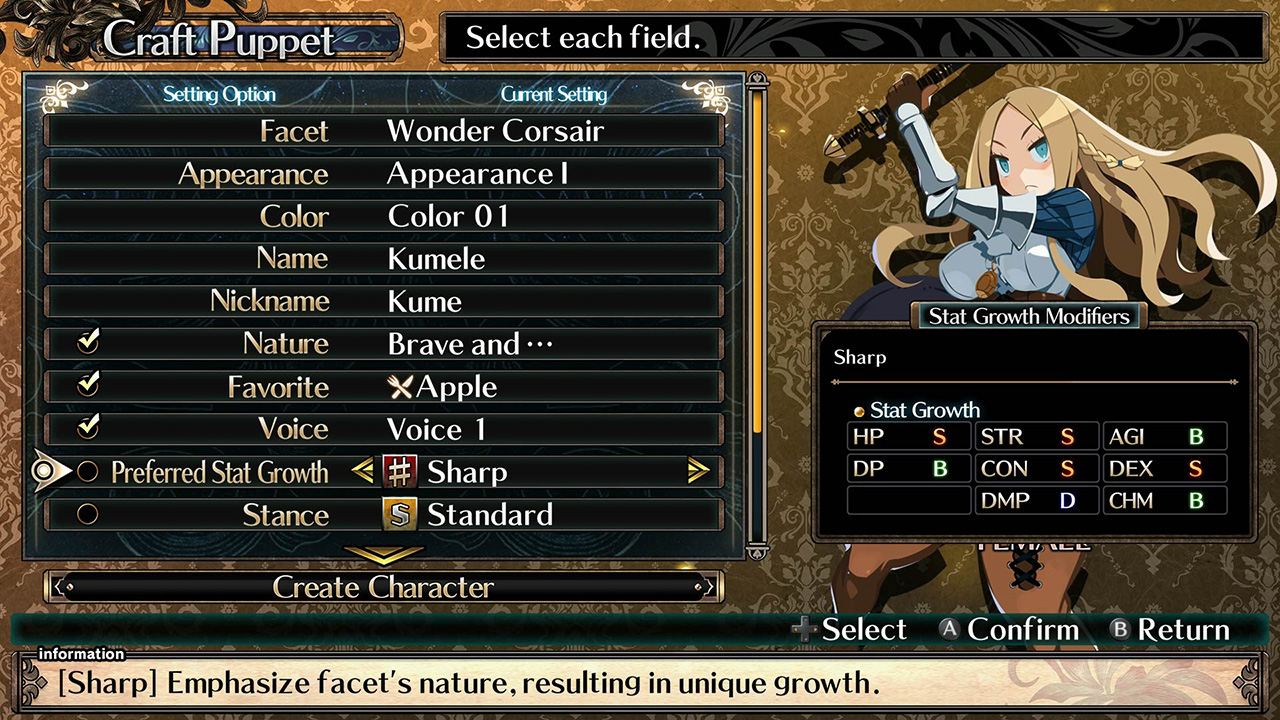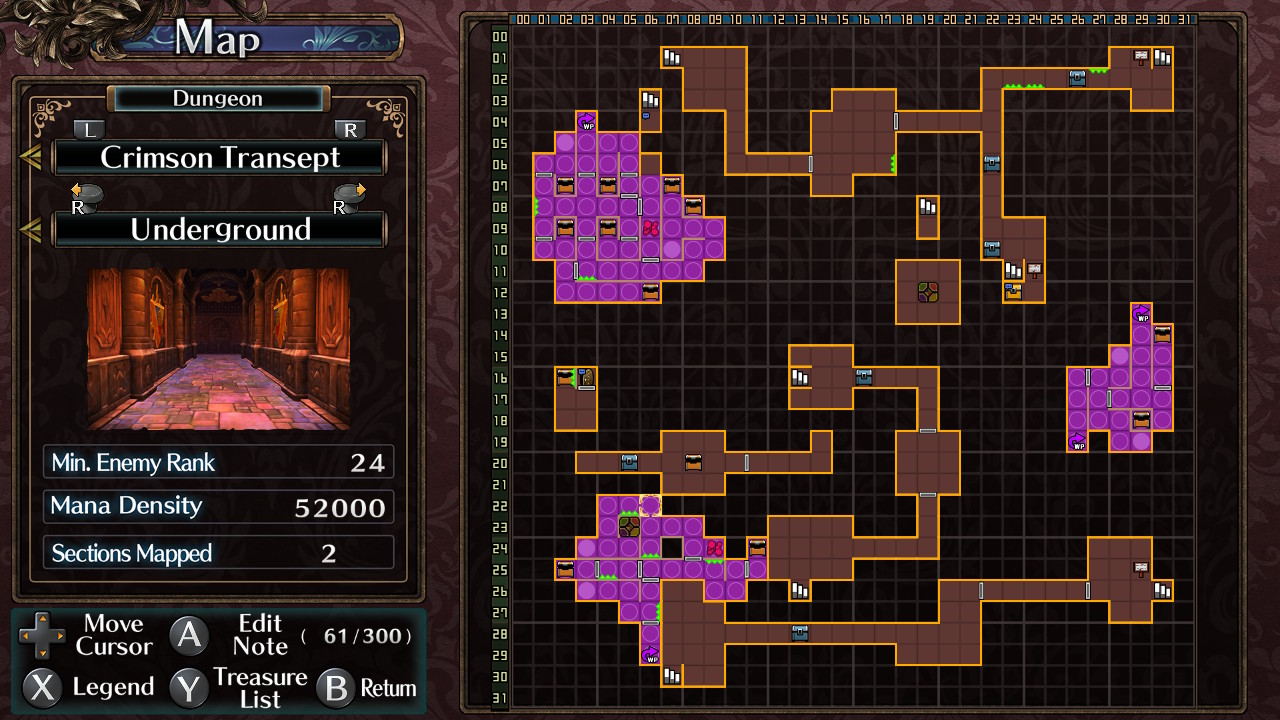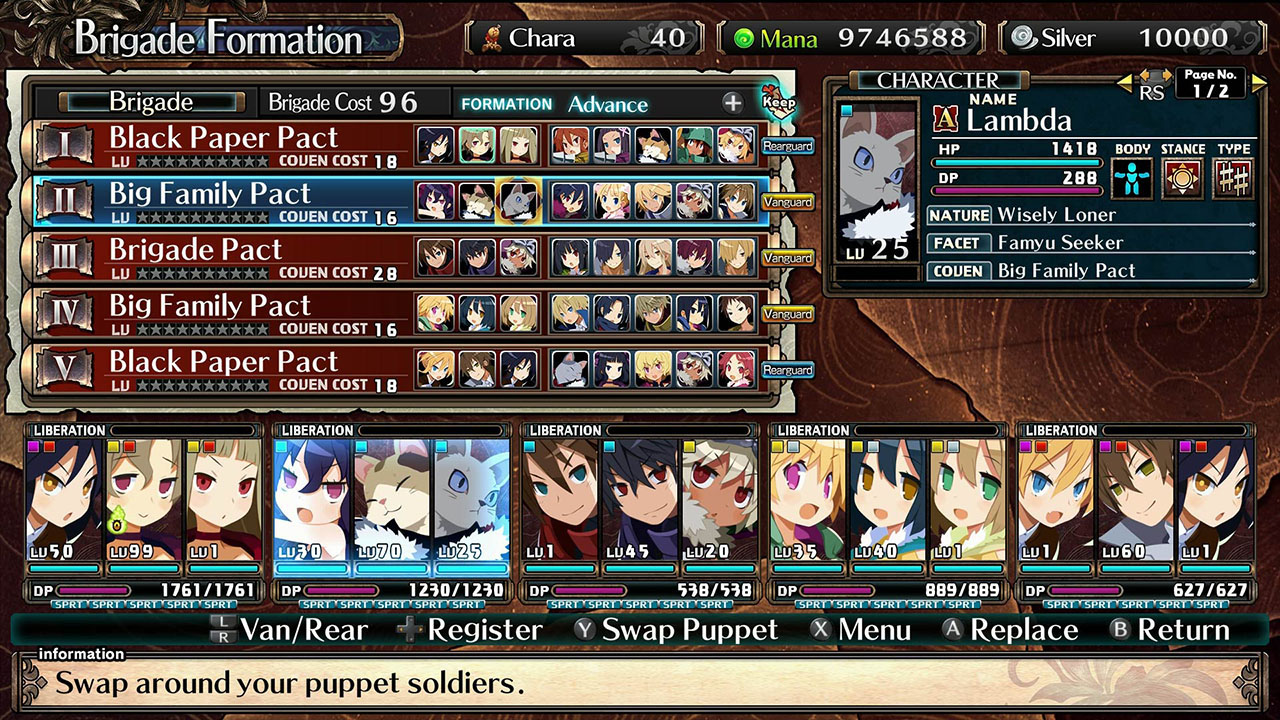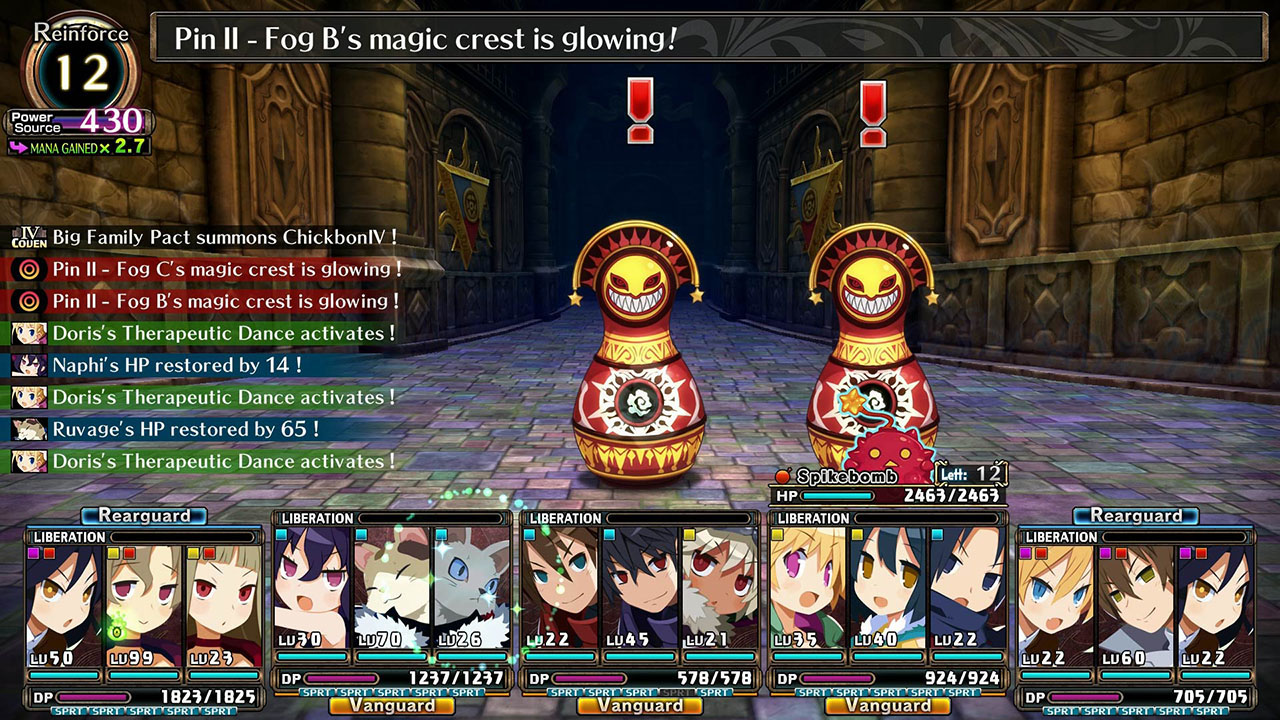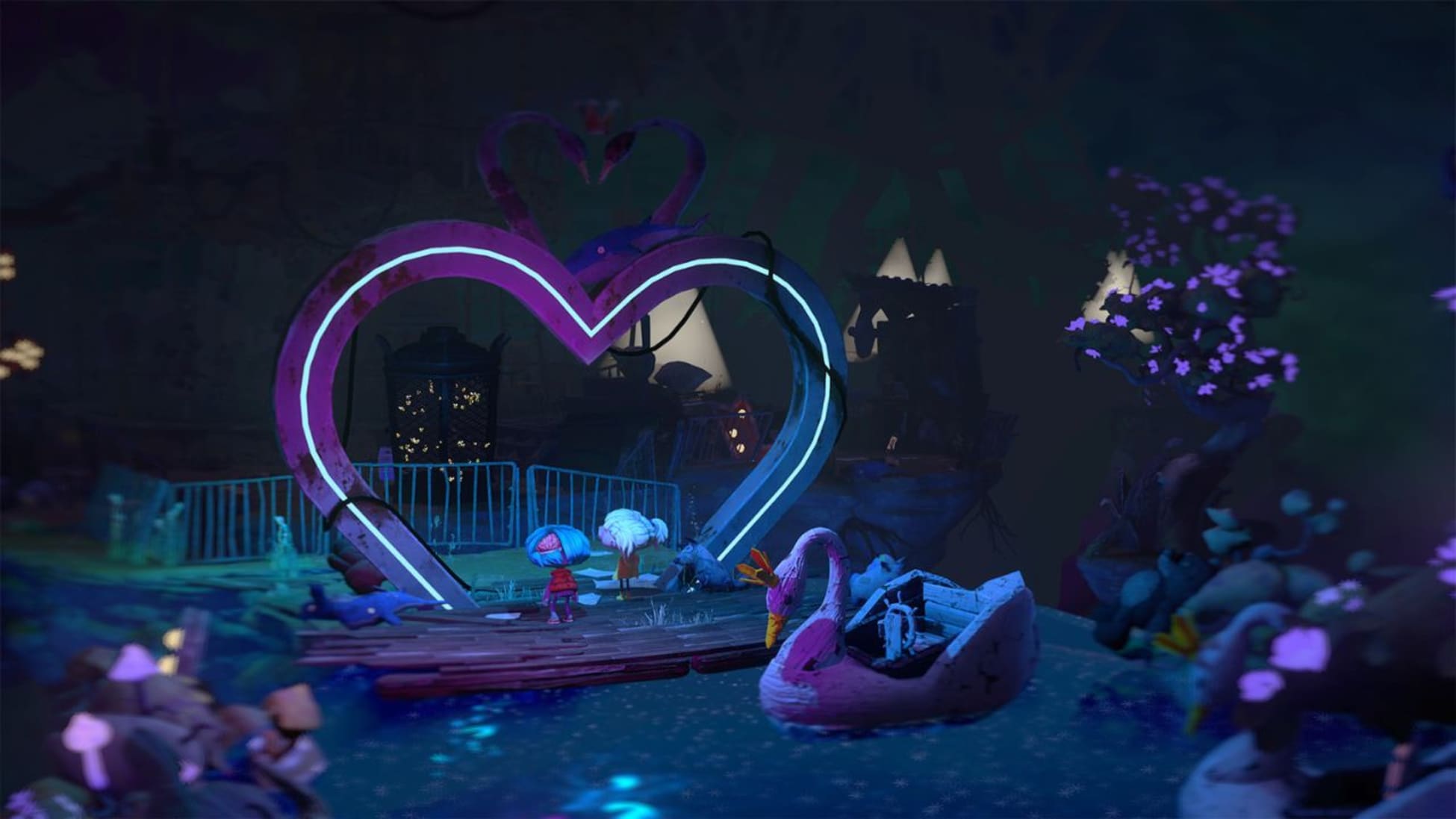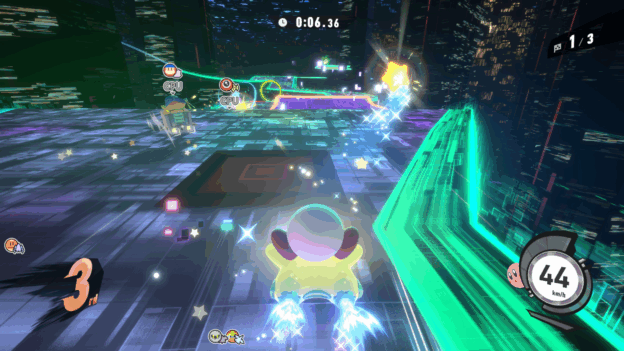Review: Labyrinth of Galleria: The Moon Society (Nintendo Switch)
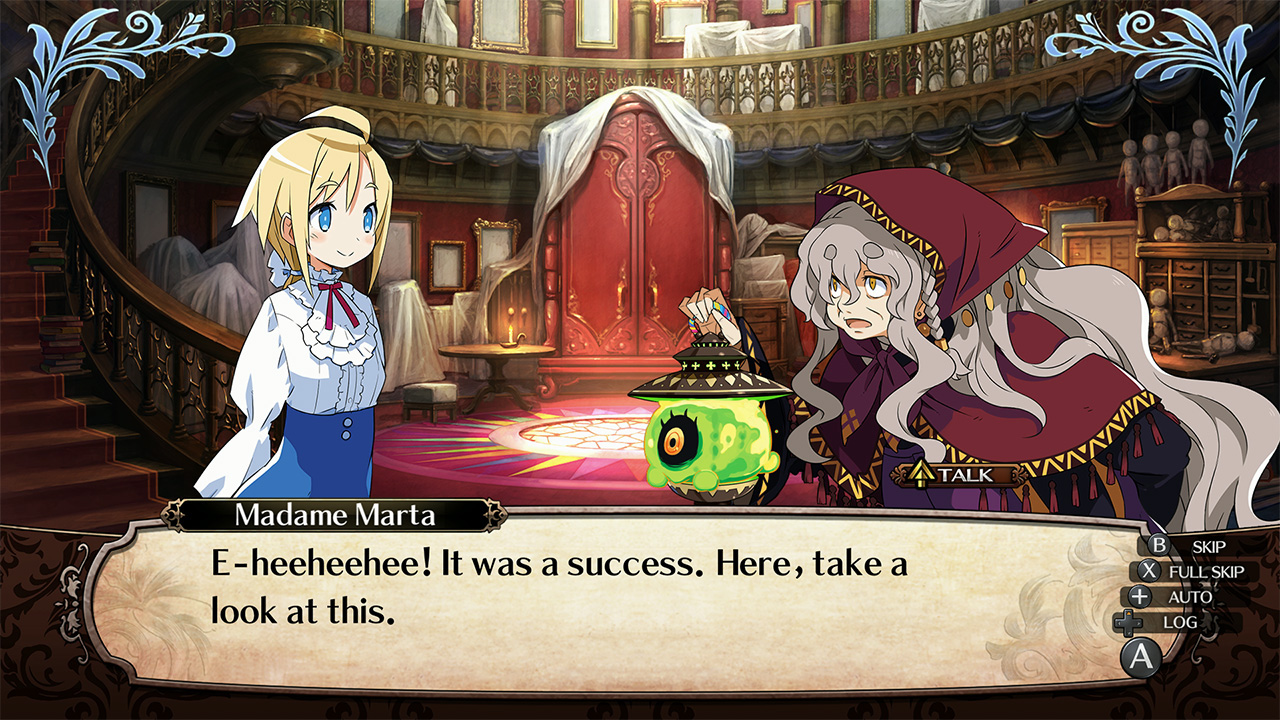
Labyrinth of Galleria: The Moon Society has little interest in whether you’re any good at it. The game tells you what you need to know, sure, but its numerous intricacies zip overhead like jets at an airshow. And when you think you’ve finally got things sorted out, it’ll toss an enemy at you that’s seemingly there just to crush your spirit and send you home.
So why did I have such an amazing time playing it? I guess I love airshows.
Labyrinth of Galleria: The Moon Society is Nippon Ichi Software’s follow-up to 2018’s dungeon crawler, Labyrinth of Refrain: Coven of Dusk. The stories aren’t connected, so no worries if you missed the former, but I bet you’ll want to check it out after playing Galleria.
The story is set around a girl named Eureka de Soleil who accepts a job at Galleria Manor. Assisted by a witch named Madame Marta, Eureka must explore the labyrinth beneath the manor to recover its treasures for the uppity Count Mismont.
It sounds formulaic, but oh boy, does this story go off in some twisted directions. If you’ve ever read the original versions of the numerous Disneyfied fairy tales (look up Aschenputtel when you have a moment), you’ll have a good idea of what to expect.
Eureka and Madame Marta don’t handle the exploration themselves, mind you, as the entryway is a wardrobe that’s decidedly less friendly to humans than C.S. Lewis’s. So, the dungeon crawling is left to a spirit, Fantie, who inhabits the Lanterne de Fantasmagorie. Fantie’s not much of a fighter, however, so it’s equipped with puppets to which you assign characters with various skill sets.
If that sounds like a lot, we’re just getting started. The game gives you a ton of character creation options with little explanation of what any of it means. You’re basically told to just figure it out. A knowledge of Coven of Dusk will help, as the systems are basically the same. But even without that, there’s some good news; the customization doesn’t matter a whole lot. You can alter almost all of your character decisions throughout the game. And if you really don’t like one of your puppets, you can either just quit using it or destroy it. Labyrinth of Galleria expects you to make some mistakes, and it allows you to compensate for them down the road.
So, there’s a lot of setup and puppet-tweaking involved. Maybe too much, as the real fun lies in exploring the labyrinth. You’ll move through the numerous winding floors and hallways with a first-person perspective, grid by grid. The map is drawn out as you move, with key points of interest (treasure chests, locked doors, stairwells, etc.) automatically recorded. You can also record your own notes, which certainly proves helpful.
The labyrinth works hard to prevent progress, of course. Doors must be unlocked. Traps will send you falling to a lower floor. Spikes, water, and mud will block your path. And, of course, there are numerous enemies to fight along the way. You’ll see them on the map and through Fantie’s eye (singular, yes), so you usually have the option to avoid or engage.
Combat is turn-based, with your puppets either attacking, guarding, or using special abilities, buffs, or items. It’s fairly simple to push through most battles by discovering enemy weaknesses or just via some light grinding, but tougher enemies (clearly identified, thankfully) and boss battles will require strategy.
Those strategies begin with your covens. You have five covens, and you can assign your created puppets to those slots in those covens as you see fit. There can be up to three active puppets per coven, with many more serving in support roles. Which slots are open in a coven is based on pacts you obtain throughout the game, with the various pacts highlighting specific puppet strengths and weaknesses. These strengths include your Donum abilities, which are magical skills and buffs. Have a character with particularly high defense? Then you’ll want to select a guardian pact with Donums that incite enemies or provide shields. High strength? Go for a fighter pact with effective attack Donums.
That’s not even the start of it. You can place your coven in the vanguard or rearguard, and that affects which weapons you can use; a sword won’t do much good from the rearguard, for example. Puppets in the vanguard tend to get attacked more, so you’ll want to give them the best armor or a healing supporter.
That’s still not even the start of it. Sure, you can stack your covens with puppets, but the stronger the team, the more Reinforce points you sacrifice as you enter the labyrinth. Reinforce points are used to smash through walls, assign various Fantie Skills in combat, and more, but they’re limited in use. So, the fewer you have at the start, the sooner you’ll have to exit the labyrinth and retreat to your base to replenish.
That’s still not even the start of it, and I don’t want to go much further for fear of becoming the very thing I’m critiquing (probably too late). There’s just so much going on with the combat system that I never felt my party was optimized.
I ended up settling into a routine of just pushing ahead with what I had, only bothering to fine-tune after getting my one-eyed green spirit butt handed to me by a boss. If the battle wasn’t close, that meant it was time to spend my acquired mana and silver on weapon and armor enhancements. It was time to add some new Fantiebilities. It was time to create some new puppets and feed them some meat to bring them up to speed. Yep, meat is very important in this game. Gather all the meat you can.
So, I’m skipping a lot of combat and labyrinth exploration because it’s time to get to the story. Eureka’s tale is charming, funny, creepy, and disturbing in equal parts. It takes quite a while to get moving, but it becomes quite intriguing as you learn more about the characters and see how the various plot elements are connected. Labyrinth of Galleria: The Moon Society is rated M largely due to innuendo. It hints at sex and drug use, a particular character is sometimes just a feather and a strand of hair away from being nude, and some of the people you meet are even worse than they at first appear. The story is effectively told, but it’s definitely being told to adults.
I also want to address the visuals and audio. The detailed graphics are simultaneously colorful and creepy, and they look fantastic whether docked or in handheld mode. The labyrinth mostly looks the same throughout, but I never grew bored by what I was seeing.
The music is surprisingly jazzy and upbeat, adding a touch of fun to the proceedings. The voice acting, however, is a mixed bag. I liked the English cast when they weren’t overdoing the goofy voices, but that happened so much that I switched to Japanese just to avoid it. If you’re playing this game while others are in the room, they may grow to hate you.
Have I said enough to justify the 8.5 rating I’m about to give Labyrinth of Galleria: The Moon Society? This game really needs a demo to help you understand how its numerous parts come together…or don’t, depending upon how much time you spend in party management. But regardless of whether you fully grasp everything, the process of mapping out the dungeons, digging deeper, and unlocking new areas is incredibly addictive and rewarding. That alone would be enough to warrant running through the game’s lengthy playtime, but the complex story will compel you, too. Fans of dungeon crawlers, turn-based combat, and JRPGs will want to set aside 50 to 80 hours to periodically hate this game, but ultimately embrace it lovingly.

